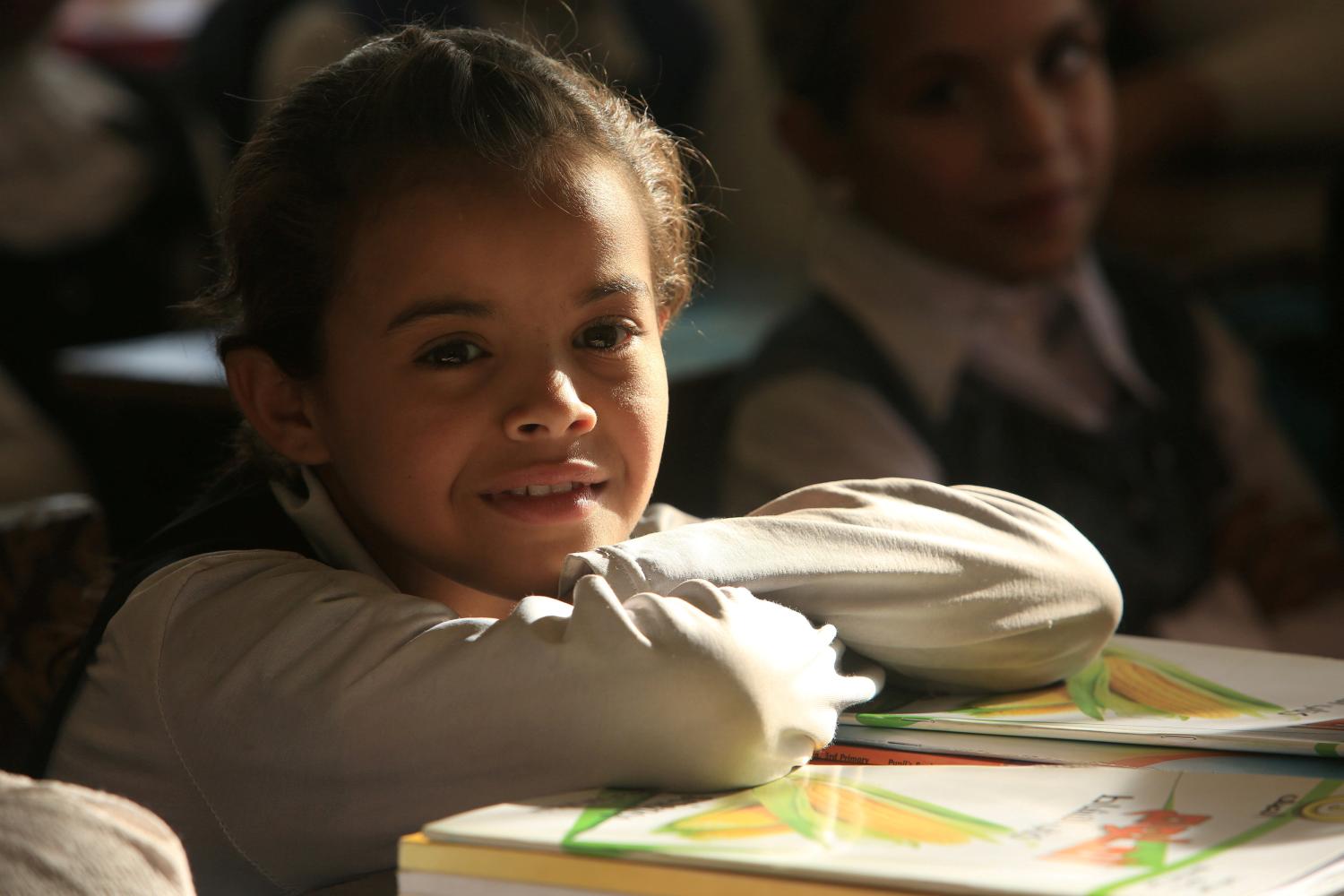The largest generation ever of 1.2 billion adolescents, ages 10-19, has the potential to spur continued social and economic progress. High-quality education could transform their lives. Yet, more than 130 million girls are not enrolled in school globally—thus missing an opportunity to learn vital skills to participate in the 21st century economy.
Launched three years after the publication of “What Works in Girls’ Education: Evidence for the World’s Best Investment,” the Adolescent Data Hub comes at a pivotal time in the field of girls’ education. High-level commitments and advocacy—from the recent G-7 Charlevoix Declaration to the recent creation of the Global Girls Alliance—indicate that donors, practitioners, and decisionmakers alike need hard-headed data and evidence on the needs of adolescent girls and what produces the best outcomes for them. With an amplified focus on girls’ education, it is crucial to have a bird’s eye view on where investments have, and haven’t, been made in data collection on adolescent girls.
The Population Council’s Girl Innovation, Research, and Learning (GIRL) Center—a global research center that generates, synthesizes, and translates evidence to transform the lives of adolescent girls—recently launched its Adolescent Data Hub, a centralized global portal to share and access information on publicly available data collected from adolescents and young people living in low- and middle-income countries.
We share the top five ways that the Adolescent Data Hub can facilitate learning across and within the girls’ education sector.
1. Generating innovative research questions through cross-sectoral analyses
The Adolescent Data Hub’s browsing and search functions can provoke innovative research questions for secondary analyses drawing from cross-sectoral datasets on topics including health, education, and economics. For example, using the Adolescent Data Hub’s more than 100 studies containing data on education and gender attitudes/beliefs, researchers can answer questions such as, “Do gender attitudes/beliefs influence the relationship between education and economic empowerment?” across different country contexts.
Some studies in the Adolescent Data Hub were designed and funded specifically to determine how to delay girls’ age at marriage. Others are designed to test interventions aimed at keeping girls in school. Using this rich body of data, decisionmakers and researchers can better understand how early marriage can disrupt schooling, how education might delay marriage, and how to design the most effective interventions to address both problems. Researchers can currently leverage at least 30 longitudinal datasets in the Adolescent Data Hub to analyze changes in these relationships over time.
2. Increasing the availability of longitudinal data and data on very young adolescents (10-14)
Across sectors, researchers are working to determine the most important time to intervene to promote a healthy transition from adolescence to adulthood. With 44 datasets on very young adolescents (VYA), ages 10-14, in 32 countries, the Adolescent Data Hub has gathered a body of work on this critical population. Since the majority (80 percent) of VYAs are in school and early adolescence is a “period of rapid physical, social, emotional, and cognitive changes,” the school setting provides an important venue to intervene for VYAs. Fifteen longitudinal studies on VYAs currently included in the Adolescent Data Hub can allow researchers to assess if and how investments in early adolescent programming translate in terms of long-term effects for girls. For example, the Adolescent Girls Empowerment Program (AGEP) is a prospective randomized evaluation that tested the effectiveness of a set of interventions aimed at improving vulnerable Zambian girls’ social, health, and economic resources. Datasets like AGEP can be leveraged to help researchers hone in on the best time in the VYA period to intervene in different dimensions of well-being.
3. Performing comparative analyses
With 99 nationally representative datasets covering five regions—many of which are parts of series—the Adolescent Data Hub presents researchers with the opportunity to conduct comparative analyses. Using Demographic and Health Surveys data from 43 countries, recent Population Council research investigated progress in both improving primary school enrollment and attainment for girls and eliminating gender disparities. The analysis found that gender parity in attainment is not the most comprehensive or accurate indicator of gender equality in education, and can mask inequality issues related to school quality and learning.
Longitudinal datasets linked to in the Adolescent Data Hub can further enhance this type of analysis. For example, the Young Lives survey collected data on 12,000 impoverished children living in Ethiopia, India, Peru, and Vietnam every three years over a period of 15 years to identify the drivers and impacts of child poverty and to generate evidence to inform policy and programing. Using Young Lives data, researchers can analyze how the determinants of poverty differ and coalesce across the study sites and affect cognitive and learning outcomes, including vocabulary, reading comprehension, and mathematics skills.
4. Building the capacity of the next generation of girls’ education researchers
As a platform for open data on girls’ education, the Adolescent Data Hub democratizes data access, specifically benefiting early career researchers and practitioners based in developing countries. Early career researchers can browse the Adolescent Data Hub to discover new datasets related to their areas of interest, find datasets that allow them to explore the intersections between topics, and identify other researchers conducting work in their fields. Practitioners like the Echidna Global Scholars who bridge the gap between research and policy can draw on country- or region-specific data to generate evidence for locally-driven policy solutions. The Adolescent Data Hub creates the opportunity for policymakers to ask and for researchers to answer the most pressing questions facing the girls’ education sector using existing data.
5. Maximizing the impact of your research
In the spirit of promoting research transparency, the Adolescent Data Hub aims to help accelerate progress for girls’ education by making data accessible to researchers who can advance and translate evidence in the field. Open data enables researchers to reach across disciplines and formulate questions that are far more likely to lead to groundbreaking discoveries on solutions for girls’ education. Using existing, openly shared data makes it easier for researchers to reach across disciplines and formulate the kinds of innovative questions and research agendas that are far more likely to lead to groundbreaking discoveries. Beyond accelerating progress, the collaboration supported by data sharing boosts researchers’ ability to secure the funding they need, because donors are attracted to interdisciplinary, innovative work.
Successful education policies and programs are those directly tied to quality data and rigorous evidence. We invite you to access and use the Adolescent Data Hub to generate relevant and innovative research to accelerate progress for girls’ education. We also ask you to consider sharing your data with the GIRL Center if it meets the inclusion criteria of: 1) Individual level interviews of males and females ages 10-24 years; 2) One or more rounds of data collected in year 2000 or later; 3) Data are publicly available; and 4) Data are collected in low- and middle-income countries.
Contact the [email protected] to join us, share your data, or propose new collaborations.
The Brookings Institution is committed to quality, independence, and impact.
We are supported by a diverse array of funders. In line with our values and policies, each Brookings publication represents the sole views of its author(s).






Commentary
How the Adolescent Data Hub can accelerate progress for girls’ education
November 14, 2018